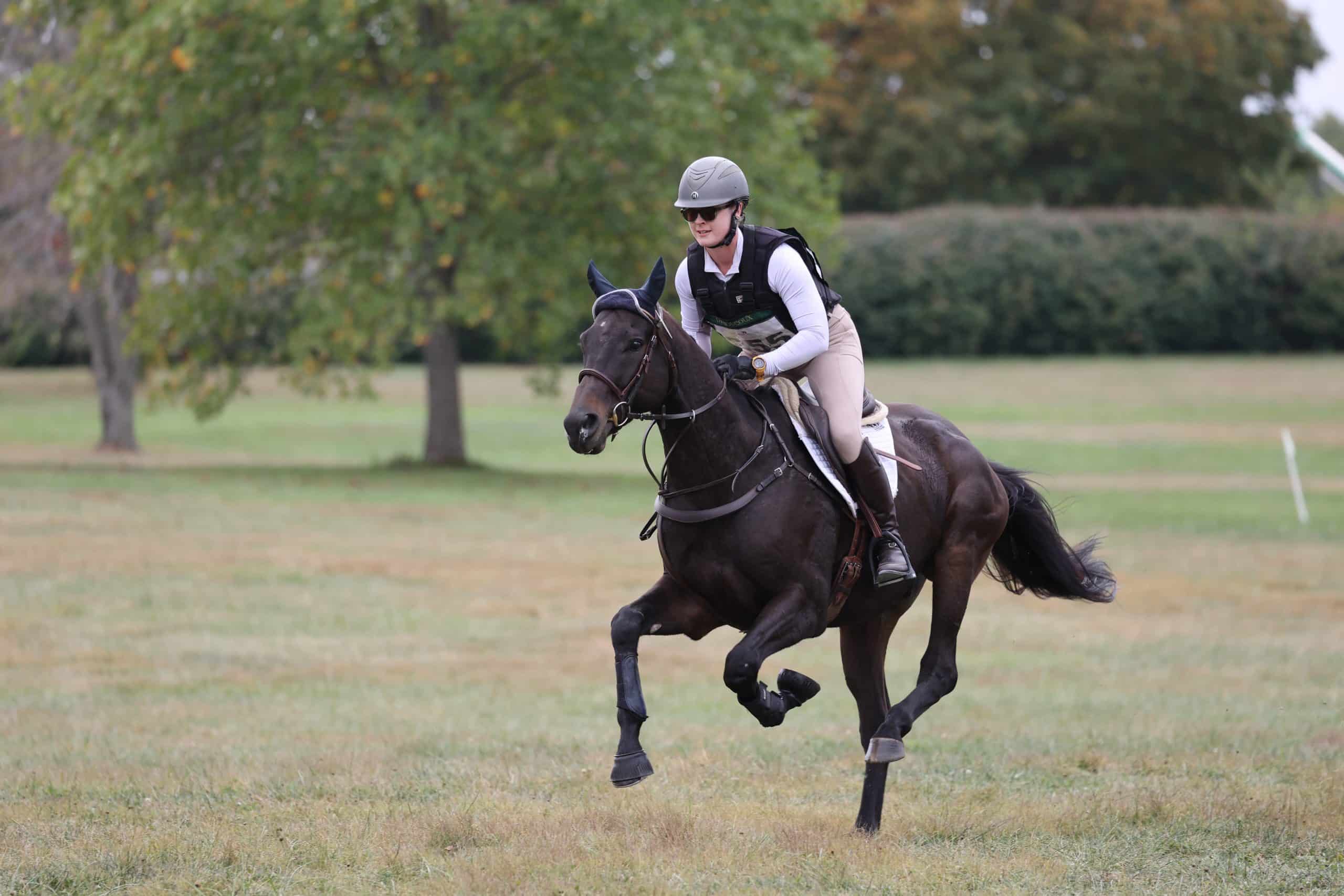
Set yourself and your horse up for success with a proper training foundation before you go for a gallop, says Beckman. Photo by Taylor Ejdys
Q: What’s the safest way to ask my Thoroughbred for more speed when we’re hacking outside of the ring? I’d love to take him for a gallop, but I’m terrified of getting run away with if he goes back into “racehorse mode!”
A: The short answer: preparation. Set yourself and your horse up for success with a proper training foundation and a plan for your gallop and for what to do if things go wrong.
Before I ever ask my Thoroughbreds for more speed outside of the ring, I want them to be at a stage in their training where they can walk, trot and canter on a loose rein in an open area. If you don’t have brakes at the canter, don’t expect to have them at a gallop!
The first time you ask for a gallop, go into it with a good plan. Choose an area with safe footing, and make sure you have room to get your horse pulled up after you gallop. Ideally, you will have room to make a wide loop as you gallop and room to circle if you need more time to gear your horse down.
Because we are trying to avoid going into racehorse mode, don’t treat your horse like a racehorse. On the track, we encourage competitiveness by galloping side by side with another horse. When you gallop at home, go solo at first. We also encourage horses to be stronger by taking a firm hold of the reins and asking them to run against the bit. When galloping at home, keep a light feel of your horse’s mouth, keep your hands soft and forgiving and try not to brace against the reins. A good racehorse will “take hold” of the bit and pull the rider along. If you feel your horse start to get strong, don’t panic and start pulling harder. Take a few strong half-halts, and remember to soften your hands between.
If things do get a little out of control, and you find yourself sitting on Secretariat, turn his head. Pick a rein, and use it to bring his head around to the side. Give him a few strong tugs on that rein as you guide him in a circle and ask him to gear down. As he slows down make your circle progressively smaller until he’s safely pulled up.
I also think it’s important to be aware of what your horse can handle mentally. Sure, galloping is fun, and there’s nothing like experiencing a former racehorse’s top gears, but I believe some horses can’t handle galloping in an open field without undoing a lot of hard work and retraining. Know your horse and his limits. Start small with a brief forward canter, and see how he recovers mentally before building more speed.
Alice Beckman is a former jockey, currently a racetrack exercise rider and racehorse owner, who runs a boutique Thoroughbred retraining and sales program in Burlington, Kentucky. She specializes in producing all-around amateur-friendly mounts.

